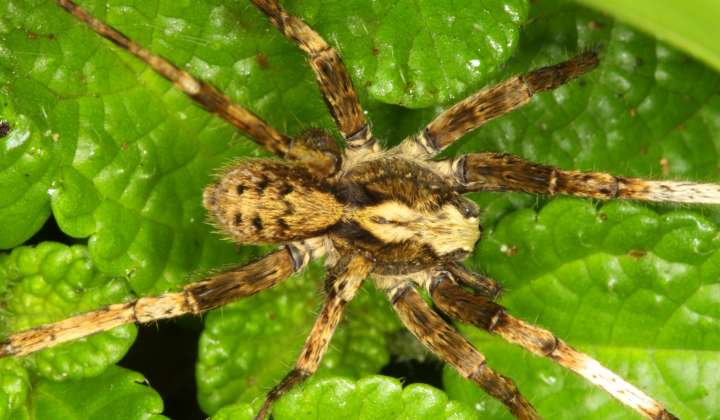99 Huntsman Spider Species
The number of new species described by a Senckenberg arachnologist surpasses 600
Together with researchers from China, Senckenberg spider researcher Dr. Peter Jäger has described 99 new species from the family of huntsman spiders in South, East, and Southeast Asia. As a result of the new descriptions, published in the journal “Megataxa,” the genus Pseudopoda – which was only discovered in 2000 – becomes the largest genus of huntsman spiders. The total number of new spider species discovered by the arachnologist Jäger thus increases to 614.
When Dr. Peter Jäger first described the new huntsman spider genus Pseudopoda in 2000, it comprised nine species from seven countries. At that time, fewer than 900 species were known worldwide in the family Sparassidae, or huntsman spiders. “Today, more than 1,300 species of this family have been described. Moreover, in recent years a disproportionately high diversity has been noted in some genera of this family,” explains Jäger, an arachnologist at the Senckenberg Research Institute and Natural History Museum in Frankfurt, and he continues, “One of these ‘megadiverse’ genera is Pseudopoda. Even prior to the most recent work, this genus was the third-largest within the huntsman spiders, and the second-largest genus within the subfamily Heteropodinae.”
All species occur in Asia – including the 99 new discoveries that were described from Bhutan, China, India, Laos, Myanmar, Nepal, Thailand, and Vietnam on the basis of morphological differences. “In all cases where material was available for genetic analysis, molecular studies supported our hypotheses. For 21 additional species, we are publishing new distribution sites and photos of the spiders’ genitalia, which are instrumental for identification,” adds Jäger.
The genus Pseudopoda is now the largest genus within the family of huntsman spiders and, only 23 years after its initial description, already the twelfth-largest spider genus altogether. In addition, the new publication contributed toward adding 1,000 new spider species to the global species inventory in less than a year after the 50,000th spider species had been described.
“Most of the Pseudopoda species have very small ranges because they are unable to balloon with the wind – unlike some other spider species,” explains Jäger, and he adds, “These spiders require forests with a leaf litter layer; we have found species both on the coast and at elevations of more than 3,800 meters.” The limited habitats make the newly discovered spider species vulnerable to environmental changes, warns Jäger. “Our study shows that the actual number of Pseudopoda species is much higher than previously known. This underscores one of Senckenberg’s core competencies: describing biodiversity as the basis for conservation measures aimed at preserving it. We must not lose additional potential species to habitat destruction – each species plays its part in the complex ecosystem!”
Publication: He Zhang, Yang Zhu, Yang Zhong, Peter Jäger, Jie Liu (2023): A taxonomic revision of the spider genus Pseudopoda Jäger, 2000 (Araneae: Sparassidae) from East, South and Southeast Asia. Megataxa, 9 (1), 1-304. Doi: 10.11646/megataxa.9.1.1







